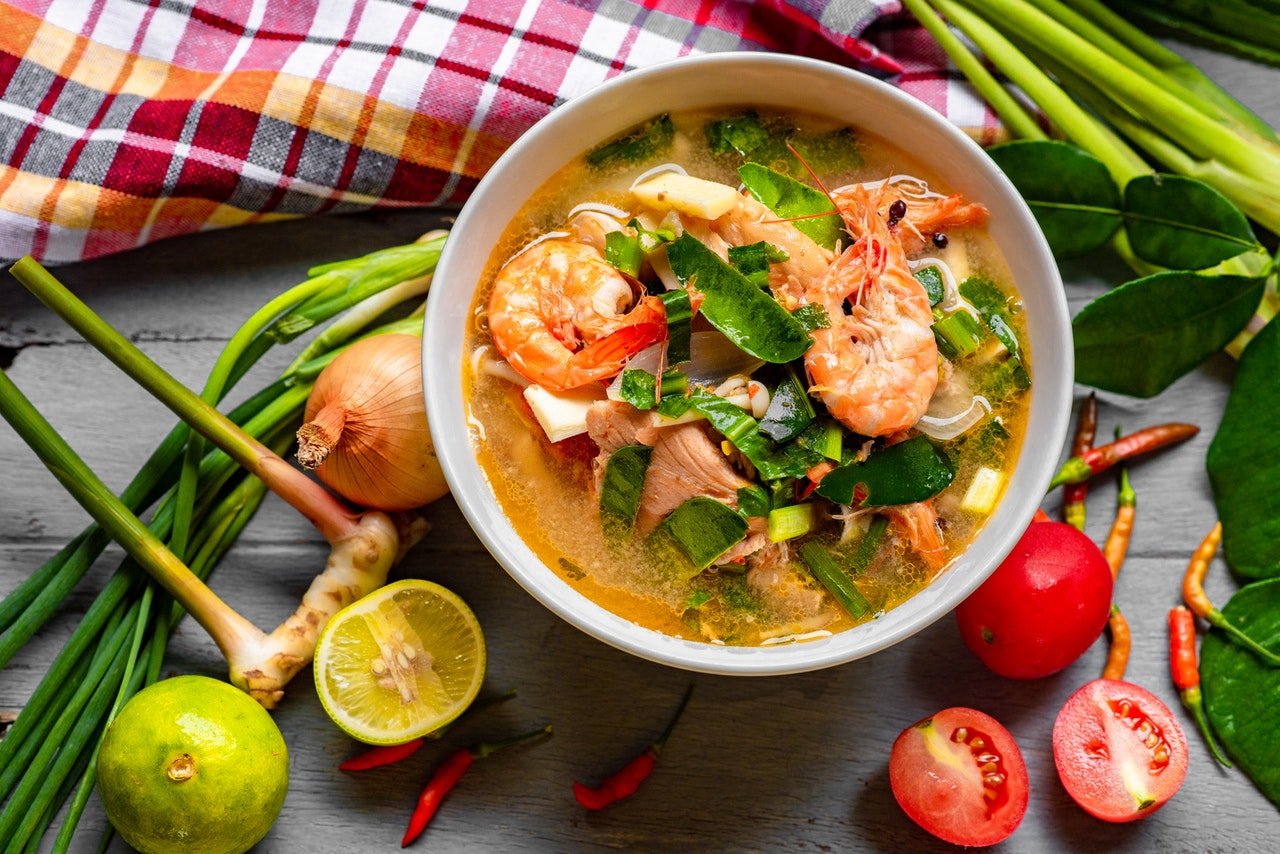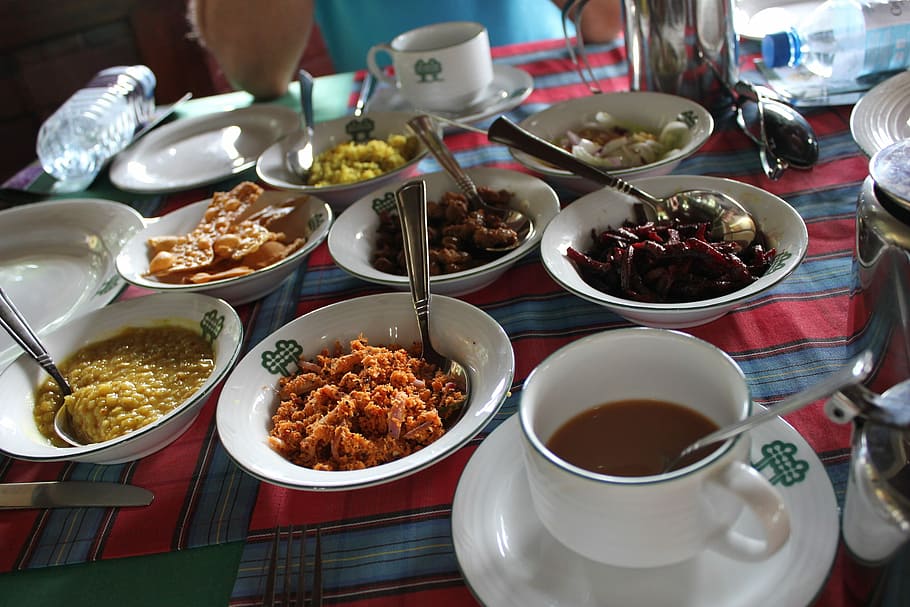The Philippines is a country that has a proud history. It has more than a hundred distinct ethnolinguistic groups found throughout the Philippine archipelago. All these ethnic groups have more authentic culinary practices. Due to this very reason, Filipino cuisine is unique among the many culinary traditions around the world. So here we bring you the most popular food in the Philippines that you must try.
Tocino

Tocino is the Filipino version of bacon. It is essentially pork belly with sugar, salt, and various other spices. It is a part of a typical Filipino breakfast namely tosilog. This name is a combination of its 3 parts: tocino, sinangag (garlic fried rice), and pritong itlog.
There are many different versions of the silog breakfast trio that simply replace the Tocino with other meat options. Tapsilog features marinated beef (‘tapa’), bansilog has fried fish (‘bangus’), and maybe the least adventurous choice is hotsilog which simply includes a hot dog.
Kinilaw

Kinilaw is a delicious seafood dish served all over the Philippines. It consists of slices of raw fish marinated in vinegar along with other ingredients like calamansi juice, salt, pepper, and chili peppers. The name kinilaw literally means “eaten raw”. Very similar to ceviche, the main difference is that Kinilaw relies on vinegar rather than lime juice to “cook” the fish.
Filipino food can be pretty heavy so if you’re feeling like you need a healthy alternative. Kinilaw makes a great appetizer or light lunch.
Chicharon
In many Spanish-speaking parts of the world, chicharon refers to a snack made with deep-fried pork rinds. In the Philippines, it refers to that too but it can also refer to other similarly deep-fried dishes usually made with either pork or chicken.
Some of the most common examples of chicharon in the Philippines include chicharon bituka, which refers to pork intestines that have been chopped up into bite-sized pieces and deep-fried. Chicharon manok or chicken skin chicharon refers to deep-fried chicken skin. It’s technically a type of chicharon though most Filipinos refer to it simply as “chicken skin”.,
Chicharon is indeed one of the most favored Food In The Philippines – yum! The following video walks you through the streets which serve the best food in the Philippines and you can eat this great dish there.
Adobo

Another famous food in the Philippines is Adobo. Adobo originated from the word Adouber which means “to dress meat in vinegar or spices”. As the century went by, the word Adouber changed to Adobar, to Adobado, and finally, Adobo.,
There is a vast variety in the preparation and cooking of Adobo in the different regions of the country. In all these regions, there is one ingredient that is a must, and it is the heart and soul of this dish: vinegar. Adobo’s other basic ingredients include soy sauce, garlic, bay leaf, and peppercorns.,
First, they marinate the meat and stew it in this mixture for hours. Then, they serve it over a bed of white rice that complements Adobo’s sweet and tangy sauce. Some recipes include coconut milk, which mellows the strong acidity, others use a sweetener (sugar or honey) to balance the flavor of the soy sauce and vinegar, and some include ingredients like ginger or onions to create a more robust flavor. It’s not just the spices that vary in Adobo, the type of meat varies too.
Sinigang

There is no documentation on where this dish originated but most people compare it with similar dishes from neighboring countries, for example, the Assam Pedas Ikan of Malaysia, Sayur Asem of Indonesia, and Tom Yan of Thailand.,
Traditionally, they make Sinigang by boiling and crushing Tamarind, the juice of which gives it its irresistibly sour yet savory flavor.,
Aside from tamarind, they use other souring agents to flavor this dish such as guava, green mango, or calamansi. In fact, Sinigang is a common dish in Filipino homes across the country any day of the week. And it’s essentially a combination of meat, garlic, tomato, onion, and whatever souring agent you preffer. This dish would not be complete without its vegetables, which are usually water spinach, eggplants, radish, okra, or long beans.,
Pork is the meat that they usually use when preparing the dish. but this can be substituted with beef, chicken, fish, or shrimp. One can also choose to completely omit the meat and just have a vegetarian Sinigang, which is just as delicious.
Kalderata
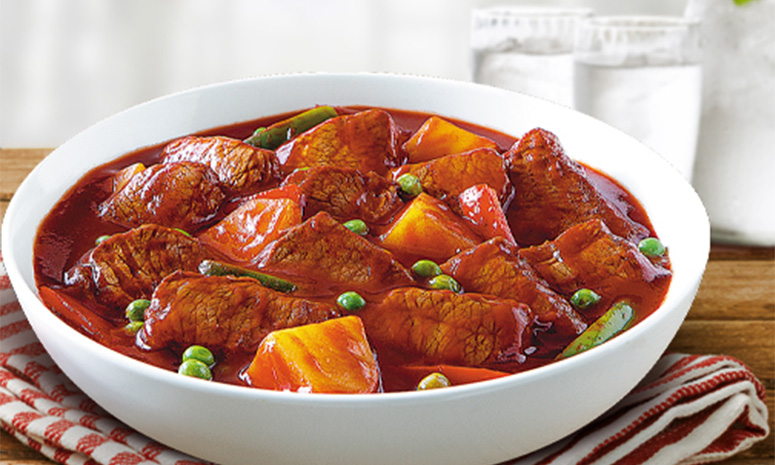
Beef Kaldereta (beef stew) is a traditional Filipino dish for parties and special events in the Philippines. The name Kaldereta came from the word caldera or cauldron, which is a vessel for cooking stews. traditionally, they use Goat as the main ingredient but, many use beef as a substitute. They simmer the stew in tomato puree for hours, cooked with liver spread, bell peppers, and a bit of soy sauce for extra flavor. Every household has its own variation of Kaldereta – some add carrots, cheese, green peas, and potatoes.
Bicol Express – one of the best food in the Phillippines.

This traditional Filipino food is famous for its fusion of flavors of spicy, sweet, savory, and tart. Bicol Express is a spicy Filipino stew that contains bite-sized pork pieces with chilies, coconut milk, shrimp paste, tomatoes, onions, and garlic.,
This spicy yet creamy pork stew gets its name from the train in the Bicol region of the Philippines. Bicol Express is one of the usual main dishes for lunch or dinner along with steamed rice. In fact, this is one of the best food in the Philippines.
Chicken Inasal – Another food in the Philippines that you will love!
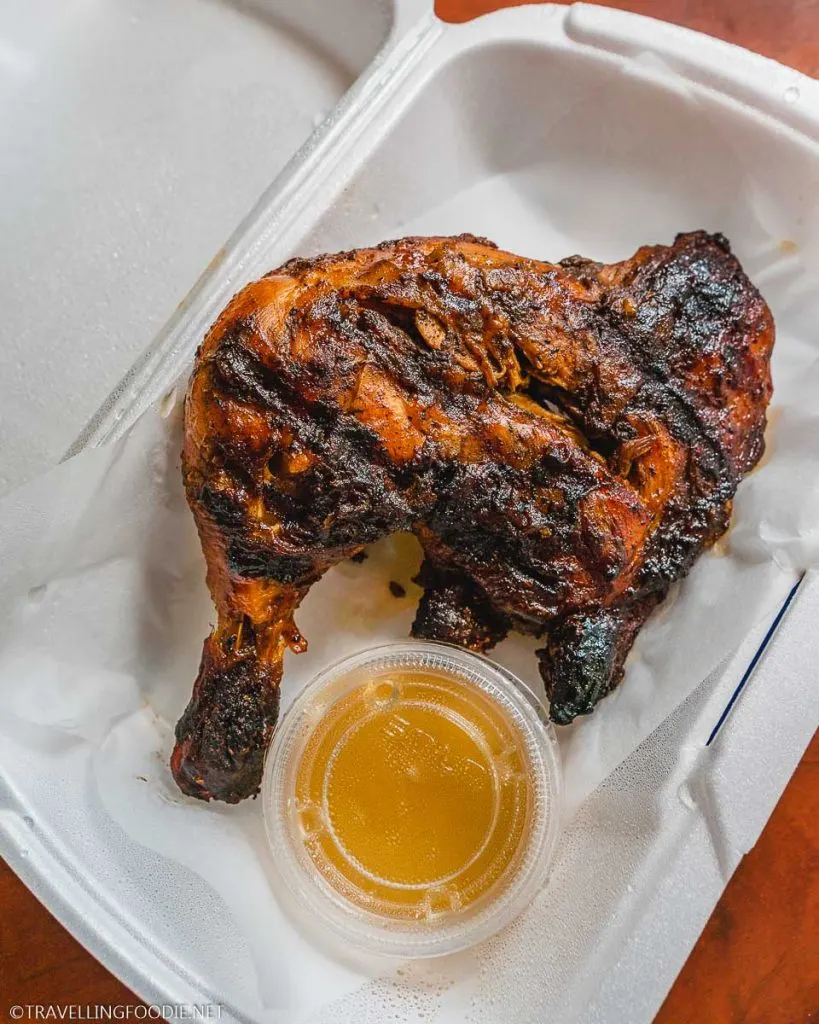
Native to the Visayan Islands, this traditional Filipino food is not your typical grilled chicken. Chicken Inasal is grilled chicken to perfection. The preparation involves chicken marinated in ginger, lemongrass, and calamansi juice. The chicken is then grilled over the fire using annatto oil. Chicken Inasal is served with rice, liquid chicken fat, and a soy sauce dip. The dish is a must-try if you love chicken.
Nilagang Baka

Nilagang baka is a traditional soup originating from the Philippines. Although there are many variations, it’s usually prepared with a combination of onions, beef broth, cubed beef, baby bok choy, cabbage, plantains, potatoes, celery, star anise, salt, and pepper.,
They slimmer the soup until the beef becomes tender and until it cooks vegetables fully. Across the Philippines, Nilagang baka is especially popular on cold or rainy days as a hot meal. Traditionally, it’s accompanied by steamed rice and fish sauce (patis). Sometimes, they serve an extra helping of the broth in a separate bowl on the side.
The meat is usually left on the bone and it is occasionally shortly smoked before being cooked. Lauya is the perfect example of traditional Filipino comfort food, always served hot and typically enjoyed with plain steamed rice on the side.
Bistek Tagalog

Bistek Tagalog is a traditional meat dish originating from the Philippines. It consists of thinly sliced beef that’s marinated and braised in a combination of citrus juice (usually from lemon, lime, or calamansi fruit), onions, garlic, soy sauce, and pepper.,
When properly prepared, the flavors should be savory, salty, and tangy. It’s important to use only the freshest beef and the most tender cuts such as top round and sirloin.
Adobong pusit
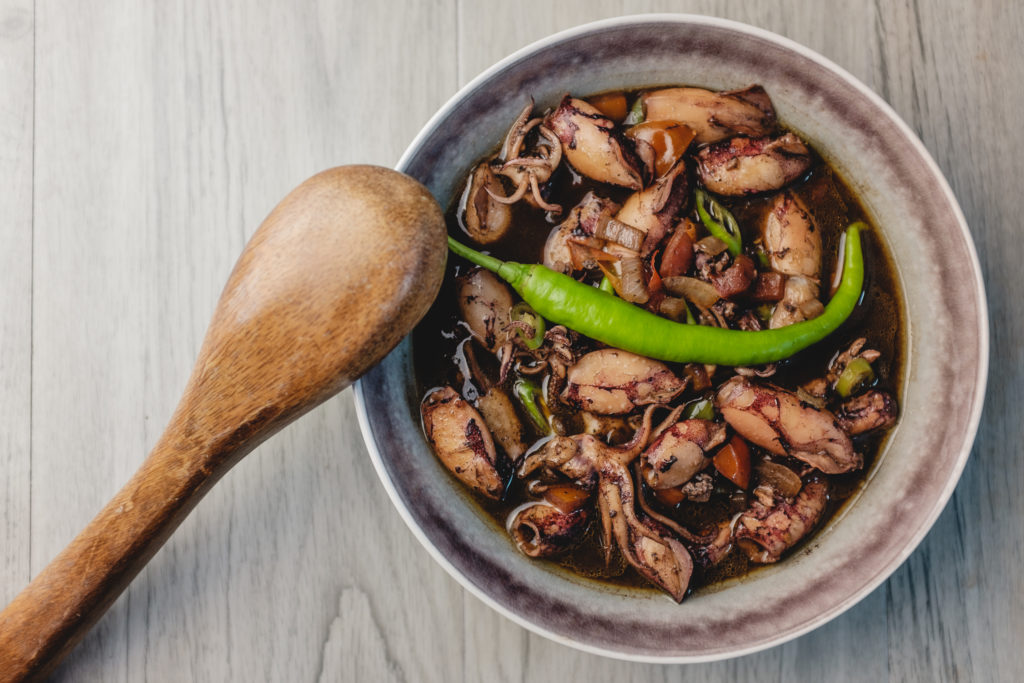
Adobong pusit is a traditional Filipino dish that’s a part of the famous adobo group of dishes. The dish is prepared with a combination of fresh squid and its ink, soy sauce, vinegar, garlic, salt, sugar, oil, onions, and tomatoes. The squid is first boiled in a mixture of soy sauce and vinegar, and it’s then sautéed in a combination of garlic, onions, and tomatoes.,
It’s important not to overcook the squid as its texture will become rubbery. This simple squid stew with robust flavors is sometimes accompanied by vegetable-based dishes on the side.
Simply the Philippines’ food is one of the top upcoming culinary styles in the world. They have a lot of variety in their food and people all over the world seem to love this traditional way of cooking. There are a lot of places you can enjoy this amazing cuisine. But to get the best regional experience we recommend you to visit the streets rather than the lavish restaurants as the stress will give you the best experience if you are a gastro tourist. Enjoy!.


